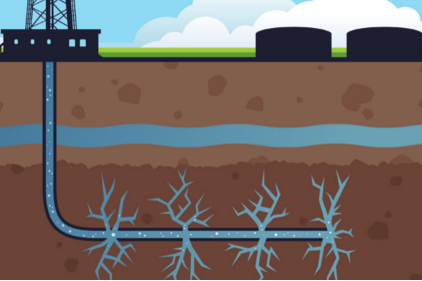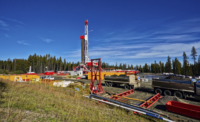OSHA issues hazard alert for fracking and drilling

 In an OSHA hazard alert, “Hydraulic Fracturing and Flowback Hazards Other than Respirable Silica,” (issued in late 2014), the agency states that more workers are potentially exposed to the hazards created by hydraulic fracturing and flowback operations due to the large increase in the number of these operations in the past decade. In light of this, OSHA has determined that additional information concerning hydraulic fracturing and flowback operations hazards should be provided to educate and protect workers.
In an OSHA hazard alert, “Hydraulic Fracturing and Flowback Hazards Other than Respirable Silica,” (issued in late 2014), the agency states that more workers are potentially exposed to the hazards created by hydraulic fracturing and flowback operations due to the large increase in the number of these operations in the past decade. In light of this, OSHA has determined that additional information concerning hydraulic fracturing and flowback operations hazards should be provided to educate and protect workers.
While not a new process, hydraulic fracturing has been increasingly used in the last ten years due to the increase in horizontal well development, which requires multiple stimulation stages per well, according to OSHA. Hydraulic fracturing involves pumping large volumes of fluid blended with proppant and chemicals at pressures necessary to fracture a hydrocarbon-containing formation. Once the fractures are created, proppants are placed within the fractures to hold them open and allow for the release and flowback of fluids and hydrocarbons.
No data available
Each year, an estimated 35,000 wells are hydraulically-fractured in the U.S., according to the hazard alert. Although the oil and gas extraction industry as a whole has a relatively higher fatality rate compared to most of the U.S. general industry, there is currently no worker injury/illness or fatality data publicly available for hydraulic fracturing or flowback operations, according to OSHA.
The alert comes about two and one half years after OSHA issued a hazard alert to fracking workers about the dangers of breathing in frac sand. The alert came after NIOSH found workers are sometimes exposed to levels of fine sand dust more than 10 times the recommended safe limit.
The dust contains silica or quartz that, if inhaled, can cause an irreversible lung disease known as silicosis, which has been linked to lung cancer.
OSHA’s alert does not make specific mention of the growing concern among federal officials that airborne chemicals from well site tanks can disorient and even kill workers who breathe them.
No safe level
The alert lists the “permissible exposure limits” for various hydrocarbons such as toluene and hexane. OSHA chief Dr. David Michaels has said that the exposure limits are set too high but that it’s not feasible for OSHA to lower them.
The OSHA limit for benzene is 10 parts per million, as one example. But Dr. John Howard, director of NIOSH, is on record as saying there is no “safe” level of benzene.
Looking for a reprint of this article?
From high-res PDFs to custom plaques, order your copy today!








